Chicago Tribune, May 7, 1961 |
Prior to the Museum of Contemporary Art's original lease, the building at 237 E. Superior St. was the headquarters for Playboy Clubs International and its magazine, VIP, which were both founded in 1961.
Hugh Hefner, Playboy's founder, was the MCA's top individual donor, in 1967 giving the organization $150,000 - the 2013 equivalent of ~$1million. Hefner was also on the original board of trustees and through the Hugh M. Hefner Association continues supporting the musuem. December 1964 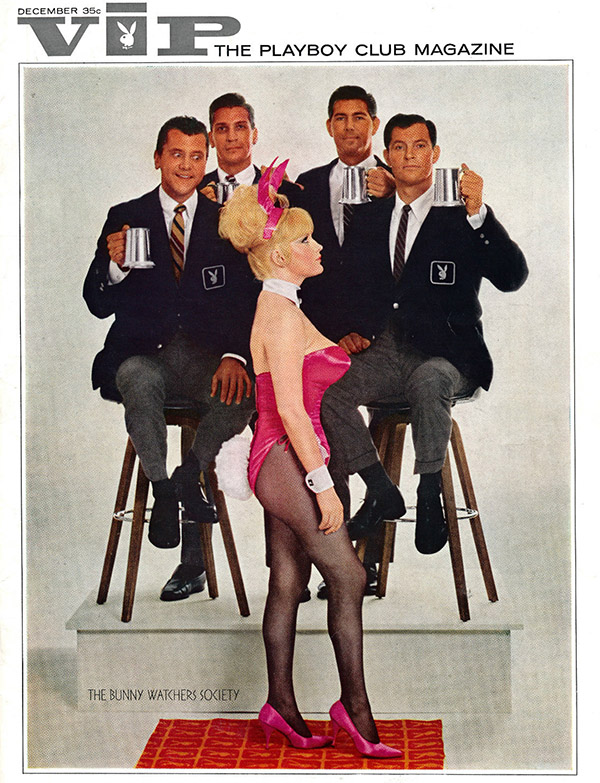 |
|
The real estate brochure at the right shows the building that was modified to become the first home of the Museum of Contemporary Art. Hugh Hefner's VIP magazine and Playboy Club International offices had a five-year lease that was up at the end of 1966; the building had already had a long history before Playboy arrived in 1961. The often-repeated story that the building was once a bakery is true, but for the majority of the time between when it was built in 1908 and when the Playboy company moved in, it was a restaurant and became two separate photo studios. |
1966: 237 E. Ontario St. real estate brochure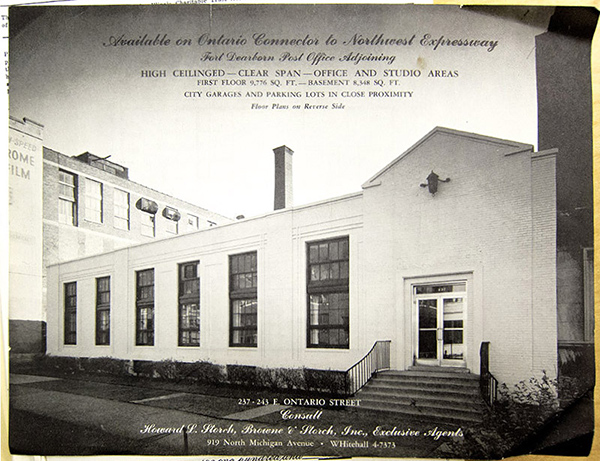 Courtesy of the MCA Chicago Library & Archives |
|
The 1908 real estate notice and the 1909 and 1911 Chicago Directory listings show that the Charles Garben Baking company built the structure in what was described as "the new manufacturing district" on Ontario Street. The directories reflect the city's 1909 street address renumbering: the former address at the same site was 414 East Ontarion St. |
Chicago Daily Tribune, July 26, 1908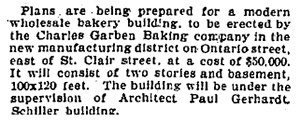 |
1909 Chicago Directory 1911 Chicago Directory  |
A couple of years after Charles Garben built his baking company, which was best known for its NONESUCH bread, "the celebrated unwrapped loaf," Messinger's Lunchroom moved into the building. Messinger's, which in 1913 had 16 lunchrooms, had downsized to 13 Chicago locations by 1926. |
1913 Chicago Directory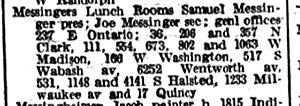 1918 Chicago Daily Tribune Classified Ad  |
1926 Chicago Daily Tribune Display Ad 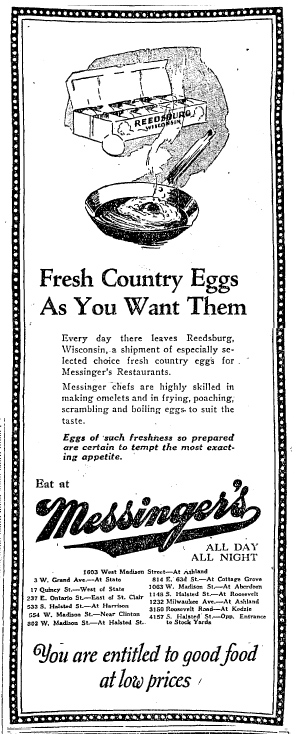 |
By 1935, Messinger's was gone and the building was resold and converted into the 25,000 square foot Underwood & Underwood photography studio. Chicago Daily Tribune, October 3, 1935 Classified Ad  And then, at the end of 1942, the Vogue Wright Studio leased the building. The Tribune reported that, according to Howard L. Storch, the lessee's real estate broker, with the leasing of the entire building, "the district centered around the Chicago Tribune rotogravure plant is fast becoming the commercial printing, illustrative, and photographic center of the midwest." Howard L. Storch, whose company still handled the building's lease in 1966, owned properties covering the area framed by Michigan Avenue and Ohio, Rush and Ontario Streets. Chicago Daily Tribune, November 29, 1942  Chicago Tribune, September 12, 1954 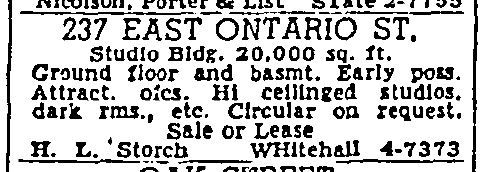 |
||